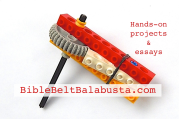
black walnuts from the parking lot
We’ve got a mature black walnut tree in our parking lot at school. Last fall, when my Kindergarteners collected autumn leaves, they noticed the walnuts. The 2nd and 3rd graders with me an hour later (for Havdalah garden maintenance) noticed the walnuts. The walnuts were irresistible. Kids kicked, rolled, lobbed and, when I gave them a bucket, collected walnuts. When I showed them how to stomp the hulls off the inner hull, they stomped.
I told them the walnuts were the tree’s way of making more trees, but that the seeds (nuts) were delicious and we’d eat them next time. Luckily, squirrels had gotten there first, so I was able to show teeth marks on shell fragments, proving that humans aren’t the only critters to love walnuts. Our scheduled leaf hunt and garden maintenance were forgotten in favor of the fabulous, fragrant, weird, stain-y walnuts.
This meant I had to come with a way to use them in class.
When life gives you walnuts, make a lesson plan.
 At the next class I brought walnuts in various stages to the classroom: still green in hull, brown in hull, clean shells, squirrel-chewed shells, and a hammer. We banged open a few shells to taste (no allergies. I checked).
At the next class I brought walnuts in various stages to the classroom: still green in hull, brown in hull, clean shells, squirrel-chewed shells, and a hammer. We banged open a few shells to taste (no allergies. I checked).
We dyed cloth: submerging pieces for different lengths of time to see how dark we could go. We painted with the darkest dye, just to see if we could.
Here’s what we saw:
• Walnut hulls are difficult to open, and the nutmeat is very difficult to extract from the inside.
• Some people liked the taste, some didn’t, but nearly everyone tried them. We blessed them as fruit of the tree.
• Inside some of the outer hulls were maggots: little white worm-looking larvae of the walnut husk fly. The walnut husk fly only lays eggs in walnut hulls. We collected the larvae, and I took them back to the soil so they could finish their life cycles. (The larvae don’t penetrate the nut. They remain in the spongy hull, eventually exiting to live underground for a year or two until becoming adult flies.)
• When we put the smashed hulls in a bucket of water, the water turned brown right away. Instant dye. Walnut dye is so high in tannic acid it doesn’t need a fixative (mordant) to bond with fibers. The longer the hulls soak, the darker the dye.

larvae of the walnut husk fly
How is all this Jewish?
How did I justify spending precious class time on walnuts?

dye
We are deepening our knowledge of where we are and what grows here. Black walnuts (Juglans nigra) are native to our area, and thus have relationships with critters which have co-evolved, like the walnut husk fly and the gray squirrels. We are using products of nature in a respectful way, creating no waste, taking just enough for our needs. We are exploring our habitat.
If we know, we will love, and if we love, we will protect.
Compare our walnut work to glueing googly eyes on a craft-foam.
Call it bal tashcheet, shomrei adamah, teva. Call it habitat work. It is sustainable and it is hopeful and if I can use Jewish time to introduce even a glimmer of awareness of just how miraculous our native habitat is, it is time well spent.

dye as ink
P.S. I’d love to tie-dye challah covers with this gorgeous brown. (The kids will need to wear gloves because walnut stains skin for days and fingernails for weeks!)





















Loved this!
Thanks!